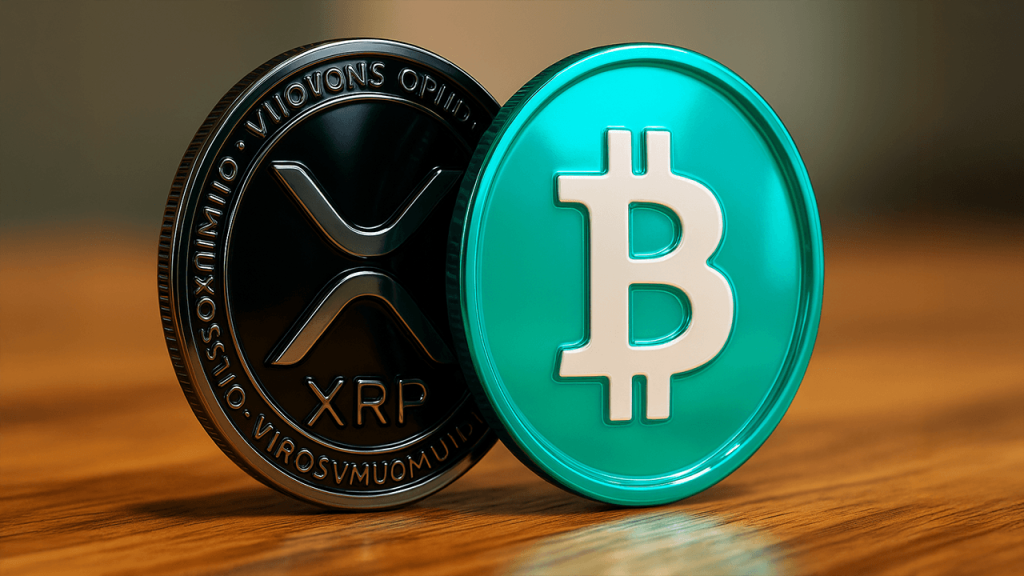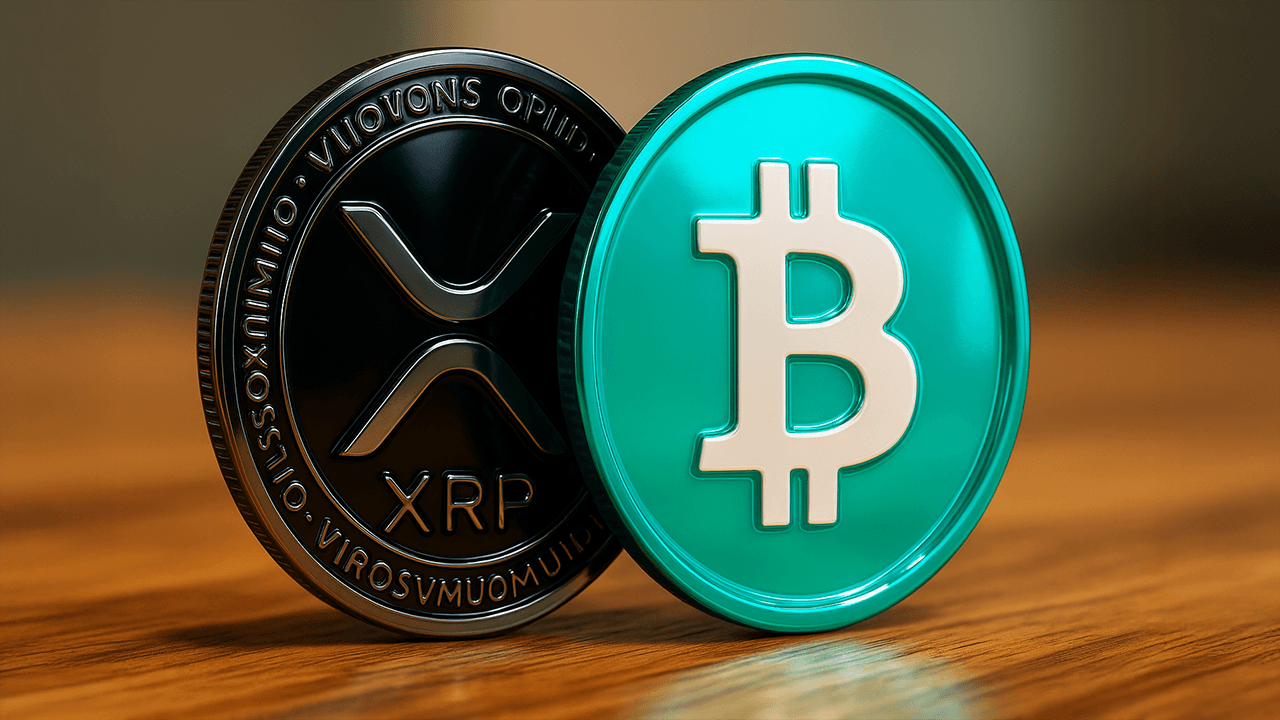
The Ripple Effect: Decoding XRP’s Volatility in a Turbulent Crypto Market
The Crypto Carousel: A Rollercoaster Ride
The cryptocurrency market is a whirlwind of activity, where fortunes can be made or lost in the blink of an eye. Unlike traditional financial markets, cryptocurrencies are subject to extreme volatility, driven by a complex interplay of technological advancements, regulatory shifts, and investor sentiment. Among the myriad of digital assets, XRP, the cryptocurrency associated with Ripple Labs, has consistently captured the spotlight due to its dramatic price swings. This report delves into the recent performance of XRP, contrasting its movements with other major cryptocurrencies, and explores the underlying factors that contribute to its volatile nature.
XRP’s Week of Woes and Weak Recovery
Recent data reveals a tumultuous week for XRP. The digital asset began the week on a high note, reaching a peak of $3.64, only to experience a precipitous drop of over 13% to $2.99. Despite a partial recovery, closing the week at $3.18, XRP still recorded a loss of nearly 8%. This volatility underscores the inherent risks associated with investing in XRP, where sudden market shifts can erase gains within days. The drop was significant enough to position XRP as a leader in crypto losses during that period, highlighting its sensitivity to market sentiment and external pressures.
BCH’s Unexpected Surge: A Contrasting Tale
While XRP struggled, Bitcoin Cash (BCH) emerged as a surprising victor, boasting an impressive 8.7% increase. This divergence underscores the individualized nature of cryptocurrency performance, where one coin’s misfortune can coincide with another’s triumph. The rise of BCH while other major cryptos falter suggests that specific project developments, technological advancements, or community-driven initiatives can significantly influence a coin’s value, independent of broader market trends.
Market Liquidations and the Ripple Effect
The broader crypto market experienced a sharp downturn, resulting in substantial liquidations, with long positions bearing the brunt of the impact. Ether and XRP futures experienced larger losses than Bitcoin, indicating a higher degree of leverage or speculative trading surrounding these assets. This is often the case with XRP, as its retail investor base and price volatility attract traders looking for quick gains, thereby increasing the risk of significant losses during market corrections.
XRP’s Brief Triumph: Overtaking Tether
Amidst the volatility, XRP experienced a surge, climbing to $2.84, a notable 27.9% gain in a week. This surge propelled its market capitalization above Tether, positioning it as the third-largest cryptocurrency. This fleeting moment of glory highlights the potential for XRP to deliver substantial returns, even within a turbulent market environment. However, it also serves as a reminder that such gains can be short-lived, and market positions can shift rapidly in the crypto space.
DOGE and XRP: Leading the Decline
The broader market downturn saw Dogecoin (DOGE) and XRP leading the losses among major tokens. This decline occurred as traders capitalized on earlier gains, and U.S.-listed Bitcoin ETFs experienced outflows. The simultaneous decline of DOGE and XRP suggests a broader shift in investor sentiment, potentially driven by macroeconomic factors or profit-taking activities after a period of upward momentum.
Bitcoin’s Brief Dip and BCH’s Resurgence
While Bitcoin briefly dipped below $100,000, Bitcoin Cash (BCH) outperformed the broader market. This highlights the fact that altcoins can sometimes thrive even when Bitcoin, the dominant cryptocurrency, experiences a downturn. This could be attributed to investors seeking alternative opportunities or to specific developments within the Bitcoin Cash ecosystem that attract attention and investment.
Strong Dollar, Weak XRP: A Macroeconomic Influence
XRP’s losses were attributed to a stronger dollar, which weighed down global currencies and assets, including Bitcoin. This demonstrates the interconnectedness of the cryptocurrency market with traditional financial markets and the influence of macroeconomic factors on digital asset prices. A strengthening dollar can often lead to a decline in the value of cryptocurrencies, as investors may shift towards more traditional, dollar-denominated assets.
The Underlying Factors Driving XRP’s Volatility
Several factors contribute to XRP’s price volatility:
Regulatory Uncertainty
Ripple Labs, the company associated with XRP, has been embroiled in a legal battle with the U.S. Securities and Exchange Commission (SEC). This ongoing uncertainty casts a shadow over XRP, as the outcome of the lawsuit could significantly impact its future and its classification as a security.
Market Sentiment
XRP’s price is highly susceptible to market sentiment and social media trends. Positive news or endorsements can trigger rapid price increases, while negative news or criticism can lead to equally rapid declines.
Speculative Trading
XRP’s relatively low price compared to Bitcoin and Ethereum makes it attractive to retail investors and speculative traders, who often engage in high-risk, high-reward trading strategies. This contributes to increased price volatility.
Adoption and Use Cases
While Ripple Labs has focused on developing enterprise solutions for cross-border payments using XRP, the actual adoption and usage of XRP in real-world applications remain relatively limited. This lack of widespread adoption can create uncertainty about its long-term value and contribute to price fluctuations.
Correlation with Bitcoin
While XRP sometimes diverges from Bitcoin’s price movements, it often exhibits a correlation with the leading cryptocurrency. Bitcoin’s overall market performance can therefore have a significant impact on XRP’s price.
Conclusion: Navigating the XRP Waters
XRP’s recent performance underscores the inherent volatility and risk associated with investing in cryptocurrencies. While it offers the potential for substantial gains, it is also prone to sudden and significant price drops, influenced by regulatory uncertainty, market sentiment, and macroeconomic factors. Investors considering XRP should carefully assess their risk tolerance, conduct thorough research, and remain aware of the factors that can impact its price. XRP’s journey is a rollercoaster ride within the larger crypto carousel, and navigating it requires a keen understanding of the market dynamics and a healthy dose of caution.





